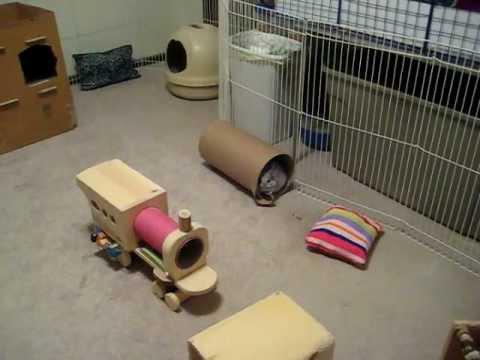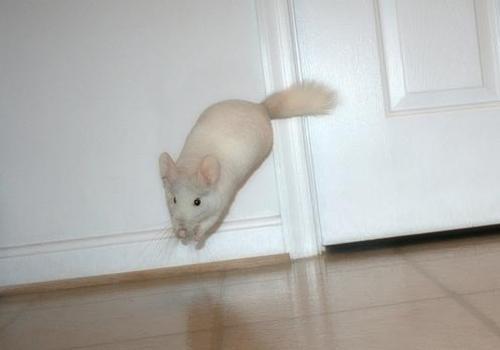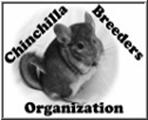Play time is an activity in which the owner spends time playing with the chinchilla outside of its cage. This can be done in any room that has been chin proofed. Holding a chinchilla is not considered playtime. Many chinchilla owners enjoy play time with their chinchilla. However, it is not necessary to have play time; many chinchillas do not get any play time and they are just as happy and healthy as those that do. Play time can be fun for both owner and chinchilla and helps to strengthen the bond between the two. There are many things to think about before having play time, including the location, safety, temperature, supervision, time, length and frequency of play time, age of the chinchilla, separate play times for each of the genders and vacations.
Starting Play Time
The wisest thing an owner can do to make play time happy and stress free for both the owner and the chinchilla is to wait until the chinchilla has learned to trust the owner. Taking a new chinchilla that is not yet used to the new family and environment can cause a lot of stress for the chinchilla. Also, when it comes time to put the chinchilla back in its cage, chinchilla that has not learned to trust the person who is putting it back, the chinchilla will run from them. Chasing the chinchilla around the room or cage to catch it can destroy any trust that may have been built. If the chinchilla trusts the owner enough to make play time enjoyable, they will come to the front of the cage and allow themselves to be picked up. If this does not happen, the chinchilla is not ready for out of the cage play time. Some chinchillas do not like out of the cage play time. They feel safer in their cages. If the chinchilla hides in a corner while out to play; it is probably too scared to do so.
Location
 A well thought out play area. Note how the playpen panels are used to
A well thought out play area. Note how the playpen panels are used tokeep the chinchilla out of dangerous areas. Safe toys are also in use.
Safety
In order to have a safe play time, chin proofing is a must. In addition to chin proofing, proper supervision is essential. Chinchillas should never be allowed out to play without an attentive adult present and watching them. These little animals are masters at getting into trouble and escaping. They will chew anything and everything if left unattended for a long enough period of time. Injury and illness due to falls and ingesting foreign objects are just two of the many things that can go wrong during play time. A few others include electrocution from chewing electric cords, getting trapped in a recliner, and being stepped on. While chinchillas are out playing, everyone present should use the “chinchilla shuffle,” walking without lifting the feet, when they walk. This will help prevent accidents in which the chinchilla is either stepped on or kicked.
 This is a play pen for small animals. These work
This is a play pen for small animals. These workgreat for many chinchilla owners and their pets.
Some have a lid and a bottom pan.
Time of Day, Duration and Frequency of Play Time
When deciding on the time to do play time, consideration should be given to the time of day or night. Chinchillas are crepuscular by nature, meaning that they are most active in the hours surrounding dusk and dawn. These are the best times to enjoy the activity. A wide awake chinchilla has more fun during play time than one that is half asleep.
Another consideration is the duration of play time. If the chinchilla is not used to it, caution is advised. Begin with five or ten minutes and increase the time by five minutes each week. Allowing the chinchilla to run around for an hour or two when it is not used to so much activity can result in seizures due to low blood sugar. Working up to an hour or more, if it is done slowly, allows time for the chinchilla’s body to adapt to the increased level of activity.
The frequency of play time is yet another consideration. Chinchillas are creatures of habit. Once they learn a routine, they will expect that routine to be repeated. Most people have play time once a day, though twice a day is acceptable, too. If a regular schedule is kept, chinchillas are often found waiting at the front of the cage to come out to play at the usual time.
 This chinchilla is “wall surfing” which is
This chinchilla is “wall surfing” which isfun for both the chinchilla and its owner.
Not all chinchillas should have play time. Chinchillas under the age of six months should not be given play time. The reason for this is quite simple; baby chinchillas are not very intelligent. When having fun, the kits do not know when to stop playing and they actually can run themselves to death.
Keeping the Genders Separate
A brief note on separating the genders for play time is necessary. Males and females should not be playing with each other for any period of time. It takes but seconds for a male to breed the female. No matter how fast a person is, stopping chinchillas from breeding is not possible. It is much better to keep the genders separate with no chance of them coming into contact with each other. Also, a pregnant female should not be given out of cage play time at all. Vigorous exercise can cause her to lose her kits.
Vacations and Playtime
Vacation can been a nerve wracking time for chinchilla owners. Concerns over whether or not the chinchilla is fine frequently bother its owner. This worry can be alleviated quite simply. Do not have the person who is watching the chinchilla take it out for play time. This will remove any chance that something can happen, such as a chinchilla that does not want to go back into its cage and runs from the caretaker. It is far less stressful for the chinchilla to just remain in its cage. Missing play time while you are away will not cause behavioral problems in the chinchilla.



 Site Last Updated on December 31, 1969 05:00 pm
Site Last Updated on December 31, 1969 05:00 pm